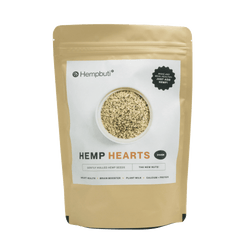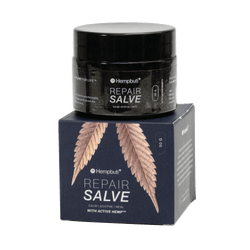All the commercial uses of hemp!
What is the hemp industry?
Hemp and its parts can be used in several different ways.It is a complex plant that cannot be easily divided. Therefore, it is important to consider how specific hemp components can be helpful in creating various products. Hemp straw cannot be used as it is. During hemp processing, the outer layer of the hemp plant is carefully removed (decortication) into as many constituent parts as possible.
This process of breaking up the straw has existed since ancient times when hemp was first introduced. The only difference is that it is no longer done by manpower but by different means. Even though there is no standard process, the basic methods remain similar:
Separate the hurds from the fibre.
The fibres are cleaned depending on their final output.
Recover the powder created in this process.
The material balance sheet of hemp
Industrial hemp can be broken down into several derivatives:
Hemp Fibre:
Technical Fibres
Short Fibres
Very Short Fibres
Woody Core
Dust
Other waste materials left behind are pebbles and wood metal; there is also a loss of water vapor and dust.
The following are the principal uses of the hemp plant as per its constituents:
|
Fibre |
Hurds |
Powder |
Hemp Seed |
|
Paper |
Animal litter |
Granulated animal bedding |
Human food |
|
Industrially used with polymers to produce composites |
Chipboards |
Fuel |
Animal food |
|
Hemp wool as an insulator |
Mulch |
Soil improve |
Cosmetic products |
|
Felt |
Insulation |
Cosmetic oils |
|
|
Geotextiles |
Hemp cement |
Oil for industrial use |
|
|
Textiles |
|||
|
String |
|||
|
Yarn |
|||
|
Rope |
Hemp in papermaking
There are thousands of non-wood paper mills across the globe, however, only a handful of them use hemp as a source of fibre. The long fibres of hemp can produce the following paper products:
-
Cigarette paper: All the fibre of the hemp stem is used in its production.
-
Filter paper: For scientific and technical purposes
-
Coffee filter
-
Teabags
-
Specialty non-wovens
-
Insulating papers
-
Greaseproof papers
-
Security papers
Speciality art papers
Did You Know?
The first Bible was written on hemp paper and so were the first drafts of the Declaration of Independence. In the early 19th century, worn-out clothes were the main raw materials for papermaking. During the Industrial Revolution, when the demand for paper exceeded the availability of rags, hemp became the most traded material.
5% of the world’s paper is made of annual plants such as hemp, flax, cotton, bagasse, wheat straw, sisal, abaca and reed.
Hemp and plastics
For the last 10 years, laboratories and technical centers have been trying to include natural materials in plastic. This is to protect the environment and reduce the use of non-renewable resources. Fibres from plants like hemp and flax are the most common natural fibres used in plastics. This is because they are easy to grow and are annual plants, that is, they grow all year round. Thus, they can be produced on short notice as compared to wood fibres that take years to grow. Hemp is a low-cost material and saves energy during the transformation process. It also has a lower density as compared to other materials. It is a recyclable product and does not leave behind any residue which is why it is already in demand in some markets. In the USA, moulded plastic contains natural fibres like hemp which is in making floors, terraces, and swimming pool sides. While European markets are opening up, the demand in France is increasing at a rapid pace.
Hemp in the construction industry
In 1986, French pioneers first used hemp for the production of light cement. Hemp cement is used to build walls, insulate floor tiles, render or insulate underlay for roofing, and in masonry blocks. In wall construction, hemp cement is used to fill up the wall spaces around the wall frame or the superstructure. The high density of hemp cement makes it useful in construction.








